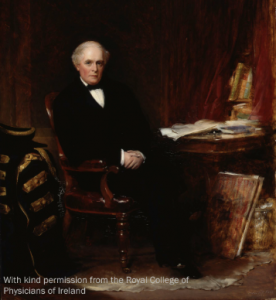Aortic regurgitation
Chronic aortic regurgitation
Natural history
The natural history of aortic regurgitation (AR) is poorly studied, particularly milder degrees. The clinical stages of chronic AR are defined by the severity of regurgitation, LV volume overload and systolic function, and symptomatic status. Compensatory mechanisms to deal with the volume load imposed by AR initially maintain cardiac performance, but over time these may fail, and symptoms may develop. The rate at which this occurs is highly variable.
Studies suggest that the size of the regurgitant orifice increases over time,27 and increases in LV mass and volumes are greatest in those with more severe AR28 (see figure 4).
In asymptomatic patients with normal LV systolic function, patients may remain asymptomatic for significant lengths of time without developing symptoms. The development of LV dysfunction is around 1.2% per year, and when combined with development of symptoms this is approximately 4.3% per year; risk of sudden death is rare.29–37
High risk features for symptom onset or LV systolic dysfunction are:
- increased age
- end-systolic diameter >50 mm (25 mm/m2)
- increased LV end-diastolic dimensions/ volumes
- LV dysfunction during exercise.30, 33–35
Studies using cardiovascular magnetic resonance (CMR) to quantify AR have also shown that quantitative measures of AR correlate well with outcome with a cut-point at a regurgitant fraction 33% or end-diastolic volume 246 ml.38,39
The onset of LV dysfunction may occur without symptoms in up to a quarter of patients;29–37 once it occurs, associated symptoms are likely to follow in approximately 25% of patients,40–42 and these symptoms predict clinical outcome.43
Symptoms
Although AR may be detected as an incidental finding, symptoms include:
- dyspnoea
- increased awareness of the heartbeat or a feeling of a bounding pulse.
The commonest presenting symptom in severe AR is exertional breathlessness,44 which may be masked as patients limit their exercise to avoid provoking symptoms.
An increased awareness of the heartbeat, or the feeling of a bounding heart, reflecting the wide pulse pressure, may also prompt patients to seek medical attention. This may be described as palpitations initially, which can be misleading. Angina in AR may be a result of hypertrophy and increased myocardial oxygen demand rather than coronary artery disease. Decompensated heart failure is the presenting complaint in a minority of cases.
Physical signs
The classic sign of AR is an early diastolic murmur, loudest in the left fourth intercostal space, with the patient sitting forwards, and with the breath held in end expiration. Increased stroke volume, or co-existent AS, may result in a systolic murmur being detected simultaneously. In more severe cases, it may be possible to hear a late-diastolic murmur at the apex, as the regurgitant jet impinges on the anterior mitral valve leaflet causing functional mitral stenosis (MS); this is known as an Austin-Flint murmur.
The amplitude of the murmur may correlate with severity.45 But its duration is a better indicator with a short murmur reflecting the short pressure half-time shown on Doppler echocardiography. The apex may be displaced laterally and inferiorly as a result of LV dilatation, and may be hyperdynamic. Blood pressure measurement may reveal a widened pulse pressure in severe AR, although patients may remain normotensive.46
There is a wide range of eponymous signs in severe AR, including:
- de Musset’s sign – bobbing of the head with the heartbeat
- Corrigan’s pulse – a collapsing pulse (see figure 5)
- Quincke’s sign – systolic pulsation of the nail bed
- Duroziez’s sign – bruits over the femoral arteries on gentle compression with the stethoscope.
Acute aortic regurgitation
Acute AR is most frequently caused by infective endocarditis and aortic dissection. It may also occur as a complication of invasive procedures on the aortic valve, such as aortic balloon dilation or percutaneous aortic valve replacement. In acute AR, adaptive mechanisms seen in chronic regurgitation do not have time to develop. The natural history of severe acute AR is brief and urgent treatment is vital.
Natural history

Symptoms
The rapid increase in LV end diastolic pressure leads to pulmonary oedema. Cardiac output falls rapidly with severe acute AR and patients may present with cardiogenic shock. As cardiac output drops, a compensatory tachycardia develops. Decreased perfusion pressure in the myocardium, exacerbated by the increased cardiac work associated with a compensatory tachycardia and increased afterload, causes myocardial ischaemia;47 this further depresses cardiac function.
Signs
The classic signs of chronic AR are often absent or attenuated in the acute form of the disease, which may lead to the diagnosis being missed. Tachypnoea and compensatory tachycardia are common findings, and pulmonary oedema may be fulminant.
The murmur of AR may be difficult to detect in the setting of severe pulmonary oedema, and may also be deceptively short and quiet, due to a low pressure gradient between the aorta and LV.
Diagnosis is reliant on imaging the heart, most commonly with echocardiography, which also plays a vital role in looking for the aetiology of the AR.
Summary
Chronic AR is a progressive disease, resulting in LV dilatation and eccentric hypertrophy. Dyspnoea is the most common symptom, but patients may also have angina, even with normal coronary arteries. The classic murmur of AR is an early diastolic murmur, best heard at end expiration with the patient sitting forward.
Acute AR may result in rapid, fulminant symptoms of cardiogenic shock and pulmonary oedema; signs of AR may be subtle and echocardiography is vital to ensure that the diagnosis is not missed.
